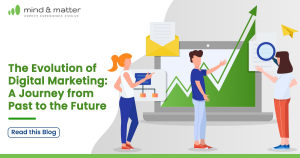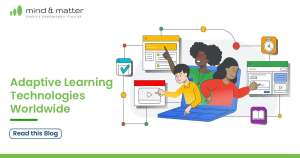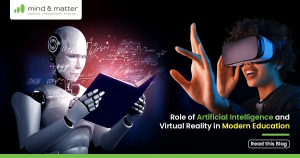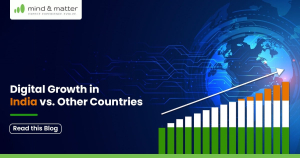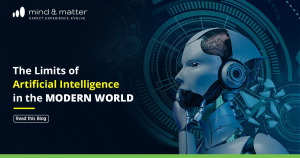Main Menu

Suman Shaw
The Rise of Short-Form Video: Capturing Attention in Seconds
In today’s digital age, where the average human attention span is now less than that of a goldfish, the way we consume content has undergone a significant transformation. Platforms like YouTube Shorts and Instagram Reels have surged to the forefront of this change, dominating the social media landscape in India with their short, engaging video formats.
For brands and content creators, this shift represents a golden opportunity to showcase their products, services, or brand story in bite-sized, captivating snippets that resonate with audiences worldwide.
Why Short-Form Video?
Short-form video content, typically lasting anywhere from 15 seconds to a minute, has become the preferred medium of expression and consumption among digital audiences, especially Gen Z and millennials. This trend is driven by the desire for quick, digestible content that entertains, informs, and engages without demanding significant time investment. Platforms such as YouTube Shorts and Instagram Reels cater to this demand, offering users a seamless, endlessly scrollable feed of short videos tailored to their interests and preferences of India.
The appeal of short-form video lies not just in its brevity but also in its versatility. Whether it’s a quick tutorial, a humorous skit, or a visually stunning product showcase, these videos can convey a message or evoke an emotion in mere seconds, making them incredibly effective for capturing and retaining viewer attention.
Leveraging Short-Form Video for Your Brand
For businesses and marketers, the rise of short-form video platforms presents a unique set of opportunities and challenges. Here are some strategies to craft engaging content that stands out:
Showcase Your Products Creatively: Use the visual and dynamic nature of video to highlight the features and benefits of your products in action. Think outside the box to create eye-catching, memorable content that showcases your products in a new light.
Tell Your Brand Story: Short-form video is a powerful tool for storytelling. Share your brand’s mission, values, or the story behind your products in a way that connects emotionally with your audience. Authenticity and relatability are key.
Offer Value: Whether it’s through tutorials, tips, or entertaining content, ensure your videos provide value to your audience. Content that educates, inspires, or entertains is more likely to be shared and remembered.
Engage with Trends: Stay up-to-date with the latest trends and challenges on platforms like Instagram Reels and YouTube Shorts. Participating in these trends can increase your visibility and attract new followers to your brand.
Encourage User Interaction: Use calls-to-action to encourage users to engage with your content through likes, comments, and shares. Interactive content, such as polls or Q&As, can also boost engagement and foster a sense of community around your brand
Challenges and Considerations
While the potential of short-form video is immense, it’s not without its challenges. The sheer volume of content means competition is fierce, and capturing the fleeting attention of viewers requires creativity, originality, and a deep understanding of your audience’s preferences. Additionally, the fast-paced nature of trends on these platforms means that brands must be agile and responsive to stay relevant.
Another consideration is the need for a coherent content strategy that aligns with your brand’s overall marketing objectives. Short-form videos should not stand in isolation but rather complement your existing content ecosystem, reinforcing your brand message and values across all channels.
Conclusion
The rise of short-form video platforms like YouTube Shorts and Instagram Reels marks a significant shift in the digital content landscape, offering new avenues for brands to engage with their audiences in creative and impactful ways. By embracing the unique characteristics of this format and crafting content that resonates with viewers, businesses can leverage the power of short-form video to tell their story, showcase their products, and build a loyal community around their brand. In the fast-evolving world of social media, those who can capture the imagination of their audience in seconds are the ones who will thrive.
The Secure Path to Digital Transformation: Best Practices and Solutions, Featuring Mind and Matter
The Secure Path to Digital Transformation: Navigating New Horizons with Confidence
In the digital era, businesses across all sectors are embarking on digital transformation journeys to enhance efficiency, foster innovation, and offer superior customer experiences. However, this transformative path is fraught with challenges, notably in securing digital assets against increasingly sophisticated cyber threats. As companies pivot to digital-first strategies, the importance of adopting a secure approach to digital transformation cannot be overstated. At Mind and Matter, we're not just advocates of this journey; we are living proof of its success and the security-first mindset that made it possible.
The Importance of Security in Digital Transformation
Digital transformation introduces new ways of working and serving customers but also brings new risks. For us at Mind and Matter, embracing digital transformation was a strategic decision to stay ahead in a competitive landscape. However, we understood early on that without a secure foundation, our efforts could easily become liabilities rather than assets.
Mind and Matter's Digital Transformation Journey: A Case Study in Security and Innovation
Our journey towards becoming a digital transformer wasn't just about adopting new technologies; it was about changing our organizational culture to prioritize security at every step. We began by evaluating our existing processes and identifying areas where digital solutions could bring significant improvements. Critical to our approach was ensuring these solutions not only enhanced efficiency and customer experience but also adhered to the highest standards of security.
- Starting with a Security-First Mindset: From the onset, we integrated security considerations into our digital transformation strategy. This approach meant choosing technologies and partners that shared our commitment to security, ensuring that every tool and process met our strict security criteria.
- Continuous Risk Assessments: We made it a priority to continuously assess the security risks associated with new digital initiatives. This proactive stance allowed us to address vulnerabilities before they could be exploited, adapting our strategies in line with evolving cyber threats.
- Employee Training and Awareness: Recognizing that our employees play a crucial role in maintaining our cybersecurity posture, we implemented ongoing training programs. These initiatives have empowered our team to become the first line of defense against cyber threats, fostering a company-wide culture of security awareness.
- Leveraging Leading-Edge Security Solutions: Our commitment to utilizing advanced security technologies has been key to our success. By adopting solutions that provide real-time threat detection and response, we've been able to stay one step ahead of potential security issues, ensuring the integrity of our digital infrastructure.
Best Practices and Solutions for a Secure Digital Transformation
Our experience has taught us valuable lessons on securing the digital transformation journey. Here are some best practices and solutions that any organization can adopt:
- Prioritize a Security-First Approach: Ensure security is a core component of your digital transformation from the beginning.
- Conduct Regular Risk Assessments: Stay ahead of threats with continuous evaluations of your digital ecosystem.
- Educate Your Team: Empower employees with the knowledge to identify and respond to security threats.
- Invest in Advanced Security Technologies: Utilize AI and machine learning for dynamic threat detection and response.
Conclusion
Our journey at Mind and Matter demonstrates that with the right approach, digital transformation can drive not only growth and innovation but also enhance security posture. By sharing our story, we hope to inspire other businesses to embark on their digital transformation journeys with confidence, knowing that security and innovation can go hand in hand. As we continue to evolve and adapt in the digital age, our commitment to a secure digital future remains unwavering, guiding us towards new horizons with confidence and resilience.
The Bright Future of Solar Energy: Navigating Digital Awareness and the Push for Solar Adoption
In the age of environmental awareness, solar energy has emerged as a key player in the quest for sustainable living. With India’s commitment to power 10 million homes with solar energy, we’re witnessing a significant stride towards ecological preservation and energy independence. This initiative reflects a deep-rooted commitment to green energy, highlighting the importance of digital literacy in facilitating this eco-friendly shift. There are many players exemplifying the fusion of innovation and dedication, proving that environmental responsibility and commercial success can go hand in hand.
India’s Leap into Solar Energy
The ambitious plan to introduce solar electricity to 10 million households is a monumental step towards leveraging India’s solar capacity. It’s designed to cut down our reliance on finite energy sources, reduce energy costs, and pave the way for a greener tomorrow. This policy-driven effort steers the nation towards self-reliance in energy and showcases the role of governance in environmental conservation.
The Role of Digital Awareness
In our digitally driven world, information accessibility is a catalyst for transformation. The digital domain is instrumental in the widespread adoption of solar energy, through several key avenues:
Education for All
Digital platforms serve as a treasure trove of information on solar energy, debunking myths, offering facts, and highlighting the benefits of making the switch to solar. This widespread access to information encourages broader adoption of solar power.
Simplifying Solar Adoption
The journey to solar energy is made easier with digital tools. Online calculators estimate savings, and streamlined processes help households apply for government incentives, making solar energy more accessible.
Maximizing Solar Efficiency
Cutting-edge digital monitoring systems enable users to optimize their solar energy usage, ensuring efficiency and reliability.
Cultivating Community
Online platforms foster communities around solar energy, bringing together enthusiasts, experts, and newcomers. These communities provide support, share knowledge, and inspire action towards a sustainable future
The Path Forward with Solar Energy
The move towards solar energy is more than a shift in power sources; it's a step towards a more sustainable, equitable, and bright future. The collaboration between policy initiatives, digital innovation, and pioneers in the solar industry is igniting a revolution in renewable energy. As we embrace solar power, we embark on a journey towards not only environmental sustainability but also energy equity and economic savings.
Adopting solar energy aligns with global efforts to combat climate change, offering a cleaner, more sustainable way of living. The embrace of solar power across India is a testament to the potential of renewable energy to transform lives and landscapes. With the support of digital tools and community networks, the transition to solar energy is becoming smoother and more inclusive.
This transition is not just about adopting new technologies but also about changing mindsets and fostering a culture of sustainability. By educating ourselves and others, leveraging digital platforms for awareness and support, and advocating for policies that encourage renewable energy, we can make a significant impact.
In conclusion, the journey to solar energy adoption is filled with opportunities for individual and collective growth. It represents a harmonious blend of technological advancement, environmental stewardship, and community solidarity. As we continue to explore and expand the horizons of solar energy, we lay the foundation for a future that is not only brighter but also cleaner and more sustainable for generations to come.As we harness the power of the sun, we move closer to achieving a balance between meeting our energy needs and preserving our planet. Let’s embrace this change, one solar panel at a time, and contribute to a greener, more sustainable world for all.
The Evolution of Digital Marketing: A Journey from Past to the Future
Digital marketing's evolution is a captivating saga of innovation and adaptation, fundamentally reshaping the business-consumer relationship. Let's embark on a chronological journey through this landscape, highlighting key milestones, technological breakthroughs, and the pivotal role of companies like Mind and Matter.
The Genesis: Pre-2000 Era
The seeds of digital marketing were sown with the birth of the internet in the 1990s. This era witnessed the launch of the first web browser in 1991, marking the internet's transition from a scientific and governmental network to a commercial and public space. The first clickable banner ad appeared in 1994 on HotWired.com, boasting a click-through rate of a staggering 44% - a figure virtually unheard of today.
The Dot-com Boom: 2000-2005
The dawn of the 21st century saw the dot-com boom, with companies like Amazon and Google emerging as key players. Google introduced AdWords in 2000, revolutionizing digital advertising with its pay-per-click model. Meanwhile, email marketing grew in popularity, thanks to its cost-effectiveness and broad reach, although it was often plagued by spam issues.
Social Media and SEO: 2006-2010
This period marked the dominance of social media and search engine optimization (SEO). Facebook opened to the public in 2006, followed by Twitter's exponential growth. These platforms became vital for digital marketers to engage with broader audiences. Google's algorithm updates, like Panda (2011) and Penguin (2012), refined SEO practices, penalizing poor-quality content and unethical link-building strategies.
Mind and Matter, a digital marketing agency, began making significant progress during this era, offering innovative solutions in SEO and social media marketing.
The Mobile Revolution: 2011-2015
The expansion of smartphones and tablets sparked the mobile marketing era. With the introduction of the iPhone in 2007 and the Android operating system, the focus of digital marketing shifted towards optimizing for mobile users. Responsive web design became crucial, and mobile apps emerged as a key marketing tool. Companies like Uber and Airbnb (Vacation rental platform) leveraged app-based platforms to disrupt traditional industries.
Content is King: 2016-2020
As we approached the late 2010s, content marketing took center stage. Businesses invested heavily in creating high-quality, engaging content. Video content, in particular, saw a significant increase with platforms like YouTube and the advent of live streaming on social media. Influencer marketing also became a significant trend, with influencers on platforms like Instagram and TikTok shaping consumer behavior.
During this time, Mind and Matter distinguished itself by providing comprehensive content marketing strategies, helping brands to effectively communicate their narratives and engage with their target audiences.
The Era of Personalization and AI: 2021-Present
Artificial Intelligence (AI) and personalization are defining the current landscape of digital marketing. Companies are using AI to analyze data and provide personalized experiences to users. Chatbots, voice search optimization, and AI-driven analytics are becoming commonplace.
Mind and Matter, along with tech giants like Google and Facebook, are at the forefront of integrating AI into their marketing services, offering more targeted and efficient marketing solutions.
The Future: Integration and Immersion
Looking ahead, digital marketing is moving towards more integrated and immersive experiences. Augmented Reality (AR) and Virtual Reality (VR) are beginning to play a role in marketing, providing unique and engaging ways to interact with consumers. The rollout of 5G technology is expected to enhance these experiences, offering faster and more reliable internet access.
Conclusion
The evolution of digital marketing is a testament to how technology has revolutionized the way businesses connect with consumers. From the early days of email marketing and banner ads to the sophisticated AI-driven strategies of today, companies like Mind and Matter have continuously adapted to these changes, leading the way in innovation. As we look to the future, digital marketing is poised to become even more personalized, integrated, and immersive, reflecting an ever-changing landscape of technology and consumer preferences.
Adaptive Learning Technologies Worldwide
Exploring how adaptive learning technologies are being implemented globally and their impact on personalized education
Adaptive learning technologies are revolutionizing the way education is delivered and experienced around the world. These technologies, which tailor educational content and experiences to individual learner needs, are increasingly being adopted in various regions, each with its unique implementation strategies and impacts. This blog explores how adaptive learning technologies are being implemented globally and their impact on personalized education.
North America: Embracing Personalized Learning Paths
In North America, particularly the United States and Canada, schools and universities are integrating adaptive learning technologies to provide personalized learning paths for students. These tools use algorithms to analyze a student's performance, adjusting the difficulty and topics of learning materials accordingly. For instance, platforms like DreamBox Learning in the U.S. offer mathematics education that adapts in real-time to the learner’s responses.
Europe: Focus on Multilingual and Cultural Adaptability
European educational systems, with their diverse languages and educational traditions, are leveraging adaptive technologies to offer multilingual support and culturally relevant content. This approach not only personalizes learning for language proficiency but also respects and integrates diverse cultural backgrounds into the learning process.
Asia: Technological Advancements Meeting Large-Scale Educational Needs
In countries like China, Japan, and India, there's a significant emphasis on using adaptive learning technologies to manage large student populations. These technologies offer scalable solutions to deliver personalized education, addressing the challenge of high student-teacher ratios. For example, platforms like Squirrel AI in China provide after-school tutoring that adapts to each student's learning pace and style.
Africa: Overcoming Educational Barriers
In African nations, adaptive learning technologies are seen as a solution to overcome barriers such as limited access to quality education and resources. These technologies can provide high-quality, personalized educational experiences in remote or under-resourced areas. Organizations like Eneza Education in Kenya use SMS-based platforms to reach learners in rural areas, offering tailored educational content.
Latin America: Enhancing Engagement and Reducing Dropout Rates
Latin American countries are adopting adaptive learning technologies to enhance student engagement and reduce dropout rates. By providing personalized and interactive learning experiences, these technologies can make education more appealing and relevant to students' lives and aspirations.
India: Navigating the Future of Customized Learning Solutions
India's adoption of adaptive learning technologies is revolutionizing its educational system, creating more personalized and engaging learning experiences. These technologies, leveraging data analytics and AI, are transforming traditional teaching methods and narrowing the educational divide in this culturally and linguistically diverse nation. Adaptive platforms offer tailored learning experiences, attuned to the individual needs, backgrounds, and languages of students. This is particularly beneficial in India, where educational content can be customized to suit varied learning paces and cultural contexts.
The focus on adaptive learning is also enhancing inclusivity in education. Students from remote or economically challenged areas now have access to quality education that adapts to their unique learning styles and abilities. This integration of technology in education reflects India's commitment to innovative, equitable solutions, preparing its youth for future challenges.
At the heart of this transformation is WOWL, a platform exemplifying the use of interactive and adaptive learning technologies. WOWL offers engaging, personalized educational experiences, significantly improving learning outcomes. Its distinct feature is the inclusion of native language speakers as teachers, enriching the authenticity and depth of language education. This aligns with India's aim of creating an innovative, inclusive learning environment, catering to its diverse demographic.
Global Impact: Democratizing Education
Globally, adaptive learning technologies are democratizing education by making it more accessible, efficient, and tailored to individual needs. They empower learners to progress at their own pace, offer targeted support where needed, and can even predict and prevent potential learning difficulties. This personalized approach not only enhances the learning experience but also prepares students for a future where adaptability and personalized skills are paramount.
Challenges and Future Directions
Despite their potential, adaptive learning technologies face challenges such as ensuring data privacy, preventing algorithmic biases, and requiring significant investments in digital infrastructure. However, as technology continues to evolve and awareness about its benefits grows, it's likely that more countries will adopt and further innovate in this field.
In conclusion, adaptive learning technologies are making significant strides globally, offering personalized, efficient, and inclusive education. Their ability to adapt to the unique needs of each learner is not just transforming educational experiences but also shaping the future of learning and teaching worldwide.
Role of Artificial Intelligence and Virtual Reality in Modern Education
The integration of Artificial Intelligence (AI) and Virtual Reality (VR) in the education sector is heralding a new era of interactive and personalized learning. As we delve into the trends of 2023, it's evident that these technologies are not just enhancing the learning experience but are also addressing some of the longstanding challenges in education. Let's explore the evolving landscape of EdTech with a focus on AI and VR.
Artificial Intelligence in Education: A Game-Changer
1. Customized Learning Experiences: AI's most significant impact in education is its ability to personalize learning. Systems like DreamBox Learning and Carnegie Learning use AI to adapt to each student's learning style and pace. This approach has shown to improve engagement and understanding, especially in subjects like mathematics and language arts.
2. Efficient Assessment Systems: Tools like Gradescope and Turnitin use AI to automate grading, significantly reducing the workload for teachers. They also provide valuable feedback to students, allowing for quicker improvements.
3. Enhancing Language Learning: AI-powered language learning apps like Duolingo offer personalized, interactive, and accessible ways to learn new languages. Their speech recognition technology helps in improving pronunciation, a critical aspect of language learning.
4. Predictive Analytics in Education: AI systems can analyze student performance data to predict future learning outcomes and identify potential learning gaps. This is incredibly useful for early intervention and tailored support.
Virtual Reality in Education: Immersive and Interactive Learning
1. Realistic Simulations: In medical education, VR simulations like those offered by Osso VR and ImmersiveTouch are used for surgical training, providing a safe and controlled environment for students to practice and hone their skills.
2. Virtual Field Trips: Google Expeditions and Nearpod offer virtual field trips, allowing students to explore everything from the Great Barrier Reef to Mars in a 3D environment. These experiences can significantly enhance understanding and retention of complex subjects.
3. Interactive Historical and Cultural Education: VR can recreate historical events or sites, offering students a 'time-travel' experience. This immersive form of learning brings history and culture to life, providing a deeper understanding than traditional textbooks.
4. STEM Education: VR can simplify complex scientific concepts through interactive 3D models and simulations. For example, the Unimersiv app allows students to explore the human body in 3D, making anatomy lessons more engaging and comprehensive.
Future Trends and Ongoing Challenges
1. Democratizing Access: A major challenge remains the accessibility of AI and VR technologies, especially in under-resourced schools. Initiatives like HP's VR Classroom aim to address this by providing affordable VR solutions.
2. Ethical and Privacy Considerations: With AI's data-driven approach, safeguarding student privacy and ethical use of data is crucial. Ongoing discussions and regulations are shaping the responsible use of AI in education.
3. Professional Development for Educators: Teachers need to be equipped with the skills to integrate these technologies into their teaching. Continuous professional development and support systems are essential for this transition.
4. Blending Traditional and Tech-based Teaching: Finding the optimal blend of conventional teaching methods and innovative technological approaches is key to maximizing the benefits of AI and VR in education.
Conclusion
The roles of AI and VR in education are multifaceted and evolving. They offer opportunities for more personalized, engaging, and effective learning experiences. As we progress through 2023, the focus is on harnessing these technologies to overcome educational challenges while ensuring equitable access, ethical usage, and the upskilling of educators. The potential of AI and VR in reshaping the educational landscape is immense, promising a future where learning is more adaptive, immersive, and accessible to all.
Digital Growth in India vs. Other Countries
Digital Infrastructure and Internet Penetration:
India
- As of 2022, India had more than 700 million internet users, making it the second-largest online market after China. Rapid urbanization, dropping smartphone prices, and affordable data plans from service providers like Reliance Jio have played a pivotal role.
- The Digital India program, launched in 2015, significantly enhanced the country's digital infrastructure. Projects under this initiative include BharatNet, aiming to connect all of India's gram panchayats (village governing councils) via high-speed internet.
Other Countries:
- China: Over 900 million internet users as of 2022, with a strong domestic tech industry led by giants like Tencent and Alibaba.
- USA: High internet penetration with over 312 million users and leading in tech infrastructure with companies like Google, Apple, and Facebook.
- Brazil: Approximately 150 million internet users, with increasing urbanization driving connectivity.
E-commerce:
India
- The Indian e-commerce market is growing rapidly, projected to reach $200 billion by 2026. Players like Flipkart, Amazon India, and Reliance Retail dominate this space.
- Government regulations, like the restriction on deep discounting, ensure a level playing field and promote a healthy competition among e-commerce giants.
Other Countries:
- China: Dominated by Alibaba's Taobao and Tmall, with an e-commerce market size over $1 trillion.
- USA: Led by Amazon, with a market worth over $600 billion.
- UK: Boasts a mature e-commerce market with popular platforms like ASOS and Tesco.
Digital Payments and Fintech:
India
- With initiatives like the Unified Payments Interface (UPI), India has seen an astronomical rise in digital payments. In January 2022, UPI transactions surpassed ₹7 trillion.
- Indian fintech companies like Paytm, PhonePe, and Razorpay have seen significant investments and user growth, transforming the way Indians transact.
Other Countries:
- China: WeChat Pay and Alipay dominate the scene with billions of transactions daily.
- USA: Increasing adoption of Apple Pay, Google Wallet, and startups like Square.
- Europe: Rapid fintech growth with companies like Klarna and Adyen.
Digital Services:
India
- India is home to many IT giants like TCS, Infosys, and Wipro, offering digital services worldwide.
- The IT-BPM industry's revenue in India was estimated to be around $194 billion in 2021.
Other Countries:
- USA: Silicon Valley remains the global hub for digital services and tech innovation.
- Europe: Cities like London, Berlin, and Stockholm becoming significant tech hubs.
- Singapore: An emerging hub for tech startups and digital services in Asia.
Digital Entertainment:
India
- OTT platforms like Hotstar, Netflix, and Amazon Prime have seen massive subscription growth in India, with regional content playing a pivotal role.
- The Indian film industry, primarily Bollywood, continues to digitize, enhancing reach and reducing piracy.
Other Countries:
- China: Platforms like Tencent Video and iQIYI have large user bases.
- USA: Hollywood remains dominant, with platforms like Netflix leading in the OTT space.
- Korea: The K-pop phenomenon and dramas have given rise to platforms like Viki.
Digital Education and EdTech:
India
- With the pandemic, the adoption of online education skyrocketed. Platforms like Byju's, Unacademy, and Vedantu have expanded rapidly.
- The edtech sector in India was valued at around $2.8 billion in 2021 and is projected to grow at a CAGR of over 20%.
Other Countries:
- USA: Home to edtech giants like Coursera and Khan Academy.
- China: Platforms like Yuanfudao and Zuoyebang have attracted significant investment.
- Europe: Growing edtech scene with companies like Babbel and Lingoda.
Conclusions
In summary, while India has experienced significant digital growth, especially in sectors like fintech and e-commerce, it's still in the middle stages of digital evolution compared to some developed nations. However, the sheer size of its population and the potential for further penetration means there's a vast opportunity for future growth.
This provides a snapshot of the digital landscape in India versus other countries. Each of these sectors is vast and continuously evolving, with new players, innovations, and challenges emerging regularly.
The Limits of Artificial Intelligence in the Modern World
As we continue to progress through the 21st century, it's hard to ignore the pervasive influence of Artificial Intelligence (AI) in our daily lives. From predictive texting to autonomous vehicles, AI technology promises to revolutionize various industries. However, it's crucial to understand the limitations of AI and what tasks it simply can't do—at least not yet. In this article, we'll explore six key areas where human expertise and creativity continue to outpace AI capabilities.
1. Creativity and Artistic Activities
While AI can create art, music, and stories, it's not the same as when humans do it. Humans put feelings and experiences into their work, which AI can't do. Human artists infuse their work with emotional depth, cultural nuances, and a layer of meaning often born out of unique life experiences. AI-generated art, while impressive in its own right, lacks this depth of emotion and nuance.
Why it Matters
The "soul" of artistic creation cannot be quantified or replicated by algorithms. The process of creation—struggling with an idea, revising it, and putting it into a form that communicates a concept or feeling—is deeply human. AI can mimic styles or generate new patterns, but it cannot conceive a message or imagine a world as humans can.
2. Lawyers and Judges
Legal systems are built on human judgment, societal norms, and moral values, none of which can be adequately quantified for a computer program. While AI can assist in sorting through legal documents or predicting case outcomes based on historical data, it falls short when it comes to making ethical decisions or understanding the small but important details of the law.
Why it Matters
Court cases often depend on how people understand the situation, what they meant to do, and what exactly happened. These things usually need a human to figure out. AI cannot serve as a replacement for the deep understanding and moral reasoning that lawyers and judges bring to our judicial system.
3. Original Ideas
AI can analyze data at superhuman speeds and make predictions based on that analysis, but it can't think creatively or produce original ideas. It can't ask "what if?" or ponder hypotheticals outside of its programming.
Why it Matters
In fields ranging from scientific research to business innovation, the ability to think outside the box and synthesize information in new ways is invaluable. Despite all its computing power, AI lacks the spark of originality that often drives human progress.
4. Computer Scientists and Software Developers
It might sound strange, but the creators of AI—computer scientists and software developers—are also among those least at risk of being replaced by it. AI can assist in coding, debugging, and even some aspects of design, but it can't replicate the innovative thinking, problem-solving skills, and detailed understanding of user needs that humans bring to software development.
Why it Matters
Software development is not just about writing code; it's about solving problems and creating value for users. The work involves complex decision-making, ethical considerations, and often, the need to innovate—all areas where AI falls short.
5. Editors
AI-driven tools like Grammarly have become popular for basic editing tasks, but when it comes to the nuanced work of human editors, AI is still far behind. Editors don't just correct grammar; they also look at context, tone, narrative structure, and the intended audience to refine a piece of writing.
Why it Matters
Good editing makes a piece of writing much better. Editors understand language and what readers want in a way that computers can't. They notice small but important details that a computer would miss.
6. Subject Matter Experts
Expertise in a subject isn't just about possessing a vast amount of knowledge; it's about understanding how and when to apply it. Whether it's a medical diagnosis, historical analysis, or complex engineering problem, subject matter experts use a combination of experience, intuition, and reasoning to arrive at conclusions. AI can assist in data analysis but cannot yet replicate the nuanced understanding and decision-making skills of a human expert.
Conclusion
As we navigate through the era of artificial intelligence, it's important to manage our expectations realistically. AI has the power to change the world in numerous ways, but there are irreplaceable facets of human capability—creativity, expertise, judgment—that it can't mimic. Understanding these limitations helps us appreciate the unique value that humans bring to the table and helps guide us in leveraging AI as a tool rather than an all-encompassing solution.





